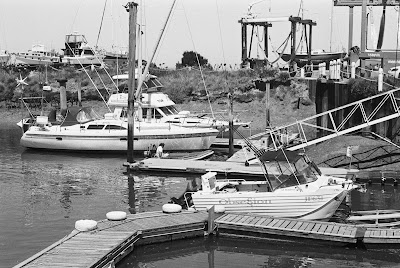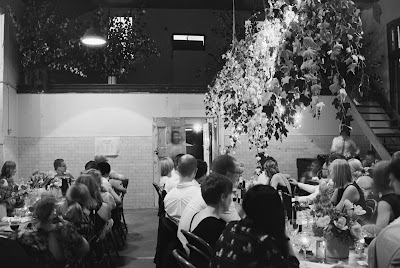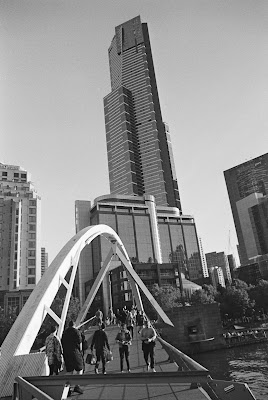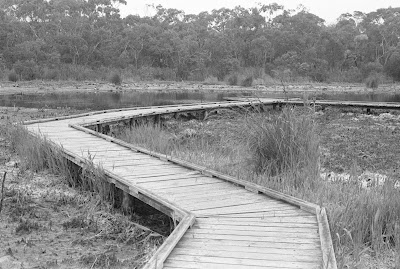How to setup a Nikon FA to read another manufacturer lens and then operate okay in P & S mode.
The FA is a sophisticated camera with Manual, Aperture Priority, Shutter Priority and full Program modes. But with the Leica lens, older Nikkors, or other lenses like SP Tamrons, they will only work on M or A mode. They will also only work on Centre Weighted metering not the AMP (Automatic Multi-Pattern).
Studying the Mir.com.my site I could see the possibility that the lens Meter Coupling Lever would give the info to the camera as to the type of lens fitted and this should then make the S & P modes work, as well as the AMP metering. I experimented with small plastic packers and sure enough the camera registered this info as if a Nikon AIS lens was fitted. I then fabricated a small plastic block from 2.3mm thick plastic and this locks securely under the Meter Coupling Lever and provides a stopper at the correct distance. As a very rough guide here are the stopper sizes needed to register the Maximum Aperture Index of varying lens maximum apertures.
1.5mm = F1.2, 1.8mm = F1.4, 2.4mm = F1.8, 3.2mm = F2, 3.4mm = F2.5, 4.3mm = F2.8, 5.5mm = F3.5, 6.5mm = F4.5, 7.3mm = F5.6. These are just approximate and you will need to test & file carefully to get it right.
With the plastic block in place this is how a F mount Leitz Elmarit-R 1:2.8 / 28mm works in S & P mode. The AMP metering is clearly now working in these modes and in A mode. These inserts would work well when using other manufacturers lenses that do couple to the Nikon F aperture lever like the SP Tamron Adaptall2 lenses, or older non AI Nikkor lenses.
In S Mode instead of getting a corresponding reading in the viewfinder LED of say F11 matching the position of the lens aperture, what is seen is F2.8 matching only the plastic block setting on the Meter Coupling Lever no matter what you set the lens aperture ring at. This is because the lens aperture ring is not coupled with the Meter Coupling Ring (with the Leica lens - Tamron Adaptall2 would couple). But that doesn't matter as long as the Meter Coupling Lever is now matching the lens maximum aperture, the camera takes correctly exposed photos once the lens aperture is rotated till F2.8 shows up in the view finder LED instead of a recommended speed - as per the manual. ( read the FA manual for all the vagaries of lens types using the S mode).
In P Mode the camera still works. Now you think I am telling you B-S because you know the Leitz lens is not coupled to the Aperture Coupling Lever in the body. So how can an automatic Program mode function? Well it does as I have tested this using my digital back that fits onto the FA. As all FA owners know, in P mode, when you see "FEE" in the LED it means you need to dial the aperture around to it's smallest setting like F22. But instead with this camera I just take a guess at the aperture setting using "Sunny 16 Rule" and let the camera work it out from there.
My digital back tests show there is a consistent reasonably exposed image obtained within a range of a F Stop either way. So say I see the scene as an F16 shot, I can guess set the aperture at either F11 or F 16 or F 22 and get a reasonably close result in P mode. There is some variance but with my digital back fitted on the FA I can only shoot in infrared (no IR/Anti Aliasing Filter) which means I need to set the Nikon to 800 ASA and the digital back Nex to 200 ASA, this exacerbates any light discrepancy, more so than when the ASA & ISO are matching with the sensor filter installed.
To test the above I took 5 photos of a scene that was best exposed at say 1/250th @ F16 using the Leitz 28mm lens. I set the Nikon to P mode with the lens aperture at F5.6 to F22. So in P mode the camera only knows that I have a 2.8 maximum aperture lens and as far as it is concerned I have not moved the aperture to it's smallest setting of F22 because the body Coupling Ring is still set at F2.8 and it is giving me the "FEE" warning in the LED. What it then does to compute the shot I have no idea but they do come out okay. With a lens that does couple to the aperture lever like an SP Tamron and the correct sized spacer block installed, then the P mode should work just fine. Here are the shots starting at F5.6 in P mode.
The Nikon FA with the digital back installed for testing.
Now that this seems to test okay with the digital back, I will try it out with film and see how the exposures work out.






















